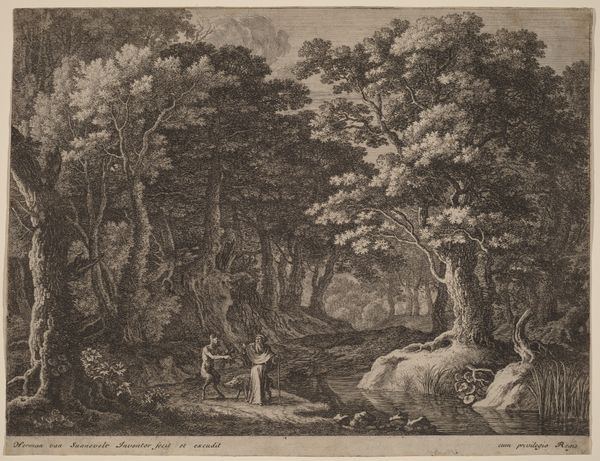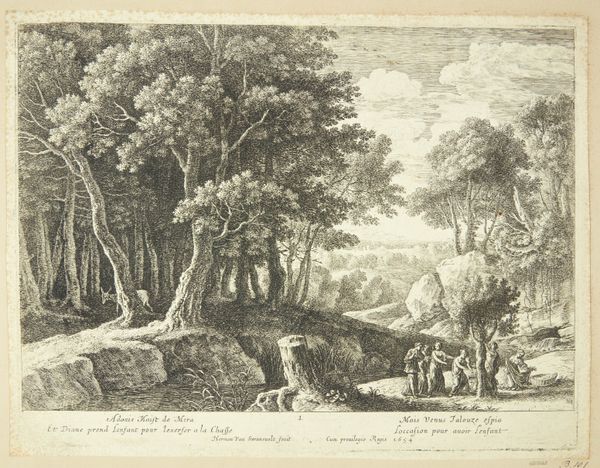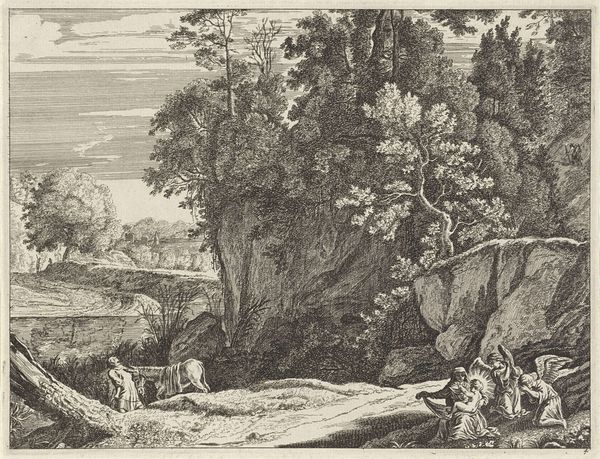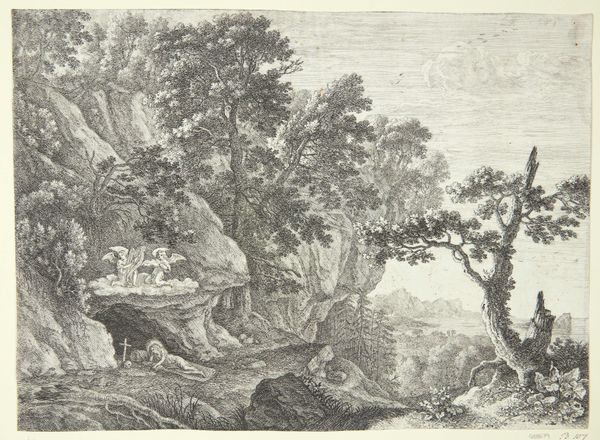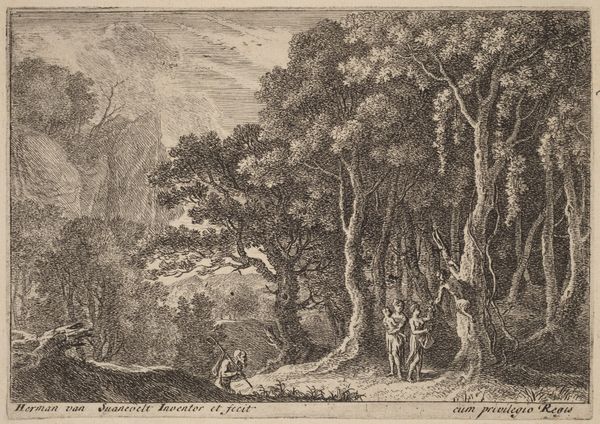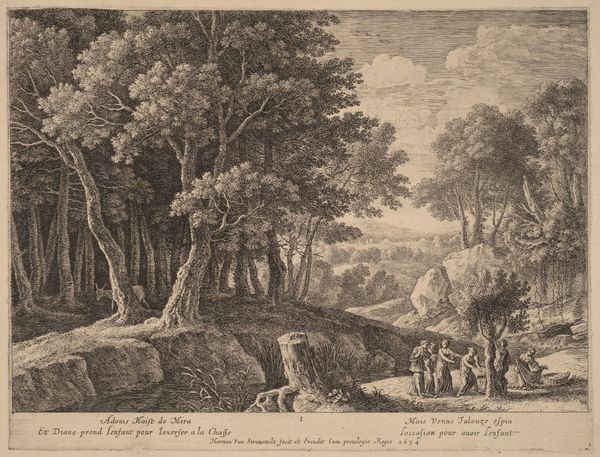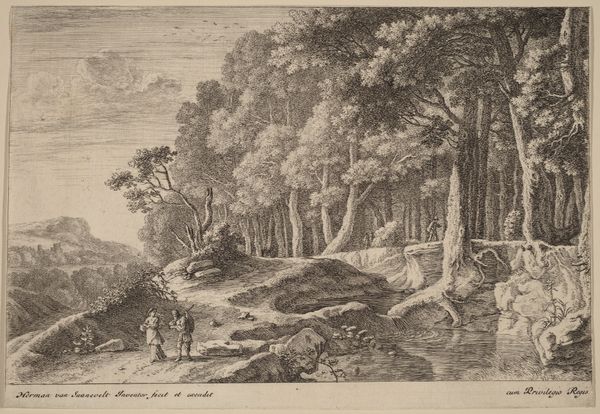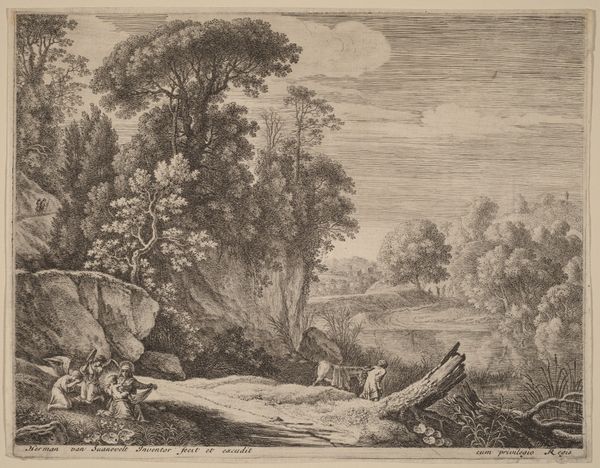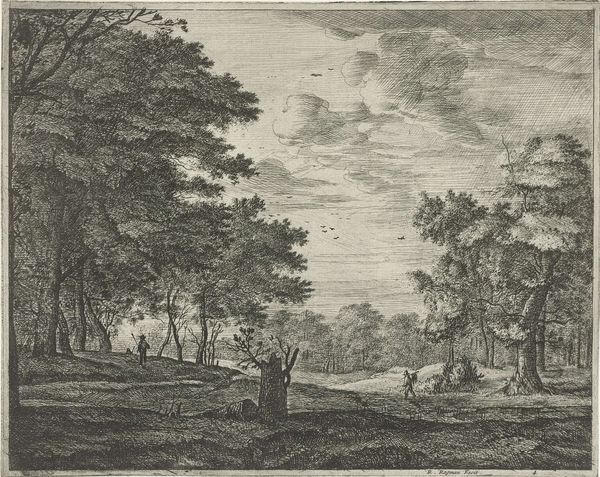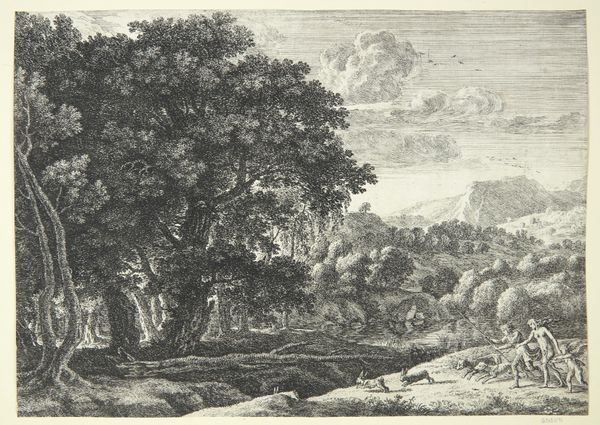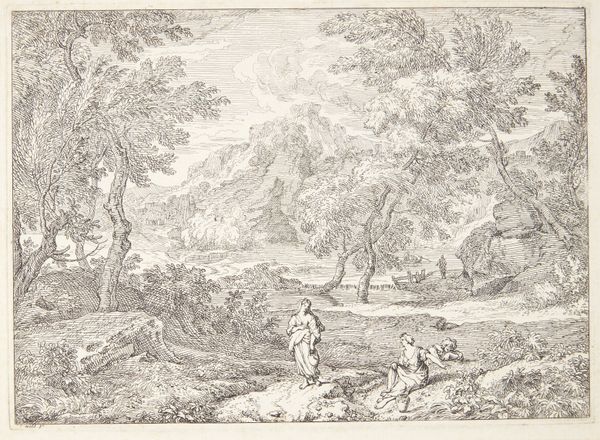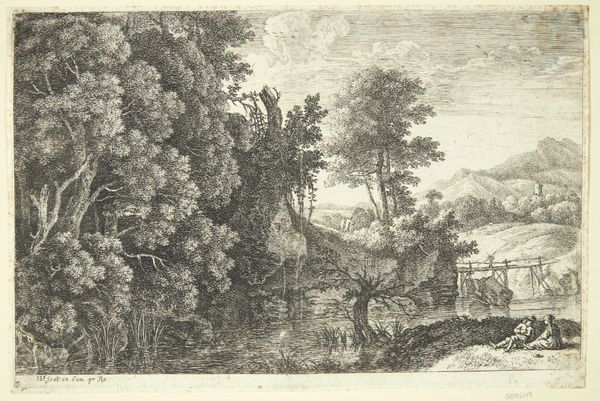
print, etching
#
baroque
# print
#
etching
#
landscape
#
figuration
Dimensions: 238 mm (height) x 326 mm (width) (bladmaal)
Curator: This etching by Herman van Swanevelt, created sometime between 1603 and 1655, is titled "Djævlen frister Skt. Antonius" which translates to "The Devil Tempting Saint Anthony." It's an intriguing scene, a testament to the baroque period's flair for drama. Editor: My immediate sense is one of almost oppressive enclosure. The density of the forest presses in, despite the sliver of light in the background. The contrast between the heavy, textured trees and the small figures creates a feeling of vulnerability. Curator: Absolutely. Consider the means of production—etching allowed Swanevelt to achieve an incredible level of detail, the textures mimicking the rough bark of the trees, the flowing water. This printmaking tradition was quite advanced at the time, a real democratization of images that could reach wider audiences than painting. The labour involved in creating the plate, in acid-etching the fine lines is remarkable. Editor: And in understanding that audience, the narrative of Saint Anthony's temptation takes on added resonance. Saint Anthony's struggle against worldly desire resonated strongly in a time of great social and religious upheaval. It’s interesting to view the artwork as a signifier of morality at the period, what choices were expected. The setting of a barren location makes the Saint and Devil power dynamics very apparent, what with one holding their cane showing the ability to hold firm on morality, while the other appears free, unrestricted and almost predatory. Curator: You make an interesting point about power. The small figures are dwarfed by nature's excess. The Devil here presents as more an irritating distraction. Was the target market the aristocratic wealthy? Perhaps his art provided landscapes as souvenirs of "being in nature," or served to provide the moral of an idyllic narrative from a high-art perspective? Editor: Yes, and I think interrogating the artist’s positioning is essential. We need to question for whom this narrative about morality was produced and what social values were reinforced or challenged in his practice. Saint Anthony being considered pure because he could remain resolute may cause certain sectors of the population to become viewed and mistreated. Curator: These kinds of detailed landscape etchings represent a tangible and tradeable commodity, one directly related to expanding early modern visual culture through technological skill in workshop and the consumption needs of the patron classes. The paper stock itself carries meaning. Editor: It truly illustrates how even seemingly religious art speaks to broader socio-political forces and how narratives, if unchallenged, become embedded and normalized within cultural representation. Curator: This has given me a new appreciation of van Swanevelt’s output; thank you! Editor: Likewise! Viewing art this way brings past struggles to life.
Comments
No comments
Be the first to comment and join the conversation on the ultimate creative platform.
